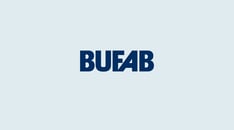The basis for the internal control over the financial reporting is the overall control environment. Bufab’s control environment consists of sound core values, expertise, management philosophy, organizational structure, responsibility, and authority. Bufab’s internal instructions, policies, guidelines and manuals serve as guides for employees. The control environment also includes laws and external rules and regulations.
At Bufab, there is a distinct division between role and responsibility to efficiently handle the risks of the operations, including rules of procedure for the Board and Committees, as well as instructions for the CEO. In the operating activities, the CEO is also responsible for the system of internal controls required to generate a control environment for significant risks.
Bufab also has guidelines and policies for financial control and monitoring, communication issues and business ethics. Most of the companies in the group have the same financial system with the same accounting systems.
The Board has appointed an Audit Committee tasked to ensure compliance with established policies for financial reporting and for maintaining the internal control.
At Bufab, there is a distinct division between role and responsibility to efficiently handle the risks of the operations, including rules of procedure for the Board and Committees, as well as instructions for the CEO. In the operating activities, the CEO is also responsible for the system of internal controls required to generate a control environment for significant risks.
Bufab also has guidelines and policies for financial control and monitoring, communication issues and business ethics. Most of the companies in the group have the same financial system with the same accounting systems.
The Board has appointed an Audit Committee tasked to ensure compliance with established policies for financial reporting and for maintaining the internal control.
The company’s size combined with the work of the Audit Committee and established and implemented solid control procedures mean that the Board does not believe that it need establish a separate internal audit function. However, the matter of a separate internal audit function is addressed annually.
Risks of material misstatement in the annual accounts may occur in connection with accounting and the evaluation of assets, liabilities, income and expenses or deviation from disclosure requirements. Bufab’s accounting function performs a risk analysis every year regarding items in the consolidated balance sheets and income statements based on qualitative and quantitative risks.
Normal control activities include reconciliation of accounts and support controls. The purpose of all control activities is to prevent, detect and correct any errors or deviations in the financial reporting. In the group’s work with internal control, the material risks identified in the financial reporting are handled through control structures, which, in all material respects, are based on deviation reporting from established goals or norms.
Normal control activities include reconciliation of accounts and support controls. The purpose of all control activities is to prevent, detect and correct any errors or deviations in the financial reporting. In the group’s work with internal control, the material risks identified in the financial reporting are handled through control structures, which, in all material respects, are based on deviation reporting from established goals or norms.
Accurate internal and external information entails that all sections of the operations will be able to efficiently exchange and report relevant material information. In addition to managers’ information responsibility, Bufab has a well-functioning intranet for exchanging information. Bufab has established a policy document to inform employees and other relevant personnel at Bufab about the applicable regulations and instructions for disclosing company information and the special requirements that apply for inside information.
For communication with external parties, there is a policy that states the guidelines for how such communication is to take place. The aim of this is to ensure compliance with information obligations and to ensure that investors receive the right information in time.The group has a whistleblower function.
Employees can anonymously contact a third party to report behavior or actions that constitute breaches or suspected breaches of laws and guidelines, etc. All contact is logged and a summary about the calls and measures taken is regularly is reported to the Board.
For communication with external parties, there is a policy that states the guidelines for how such communication is to take place. The aim of this is to ensure compliance with information obligations and to ensure that investors receive the right information in time.The group has a whistleblower function.
Employees can anonymously contact a third party to report behavior or actions that constitute breaches or suspected breaches of laws and guidelines, etc. All contact is logged and a summary about the calls and measures taken is regularly is reported to the Board.
The group applied IFRS as defined in Bufab’s accounting manual. This manual includes accounting, valuation rules and reporting instructions that must be adhered to by all companies within the group. Financial data is reported from all legal entities every month. Reporting takes place in accordance with standardized reporting procedures documented in the group’s accounting manual. This reporting comprises the basis of the group’s consolidated financial reporting. Consolidation takes place based on a legal and operating perspective, which results in quarterly statutory reports containing complete income statements and balance sheets for every company and consolidated for the group, and monthly operating reports.
Every Board member receives a monthly report containing consolidated income statements and balance sheets for the group and income statements and balance sheets for the subsidiaries with comments. In addition to this monthly information, similar information is received in connection with Board meetings and a report that includes monitoring of tax obligations, disputes, compliance with policies, whistleblower summaries, and environment.
Every Board member receives a monthly report containing consolidated income statements and balance sheets for the group and income statements and balance sheets for the subsidiaries with comments. In addition to this monthly information, similar information is received in connection with Board meetings and a report that includes monitoring of tax obligations, disputes, compliance with policies, whistleblower summaries, and environment.






